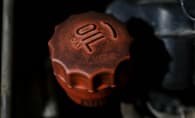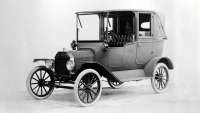In years gone by it was common to see a heavy black cloud of smoke trailing behind vehicles powered by diesel engines, but that's a thing of the past with today's clean diesel engines. One of the ways vehicle manufacturers have been able to clean up the tailpipe of diesels is the use of a Diesel Particulate Filter (DPF).
The DPF is fitted to new diesel-powered vehicles to capture the carbon particulates, soot, coming from the engine and preventing it from being released into the atmosphere and affecting our health.
The DPF collects these nasty particulates as we drive along, and periodically they are superheated and burnt off in what is known as a 'regeneration' cycle.
There are two DPF 'regeneration' cycles, passive and active.
In the case of the passive cycle the DPF warning light comes on signaling the driver that he/she needs to drive the vehicle at a speed nominated in the owner's manual or higher to generate the heat required to burn off the soot.
Regeneration can require an owner to drive at speeds above 50 km/h for upwards of 15 minutes to complete the cycle.
Owners need to consult their owner's manual to familiarize themselves with this process.
Should they ignore the signal, or fail to complete the cycle, they face the possibility of having their dealer conduct a 'forced' regeneration, which obviously costs money, or in an extreme case have to replace the DPF, which is even more expensive.
Some DPFs have an active regeneration cycle in which extra fuel is injected into the engine to create the high temperatures required for burn-off. Other DPFs have an injector that injects either diesel fuel or an additive directly into the filter during the regeneration process.





.jpg)
.jpg)



.jpg)
.jpg)






.jpg)



.jpg)




